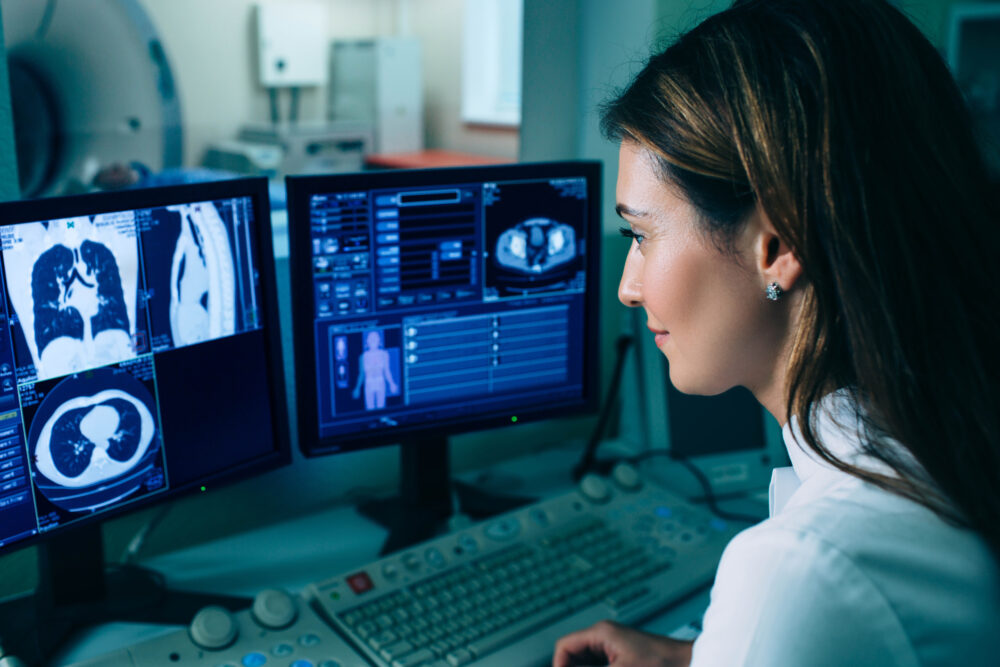Early detection, preventative policies and attention to air pollution are key factors in lung cancer

Lung cancer is now the second most common cancer in the world and the cause of the most deaths worldwide. It is estimated that one person dies from this disease every 20 minutes, highlighting the need for early diagnosis to improve patient survival and address this public health problem. Various studies show that screening for lung cancer can reduce overall mortality by 6.7–20% and reduce specific mortality from this type of cancer by 20–39%.
The evidence for lung cancer screening continues to grow, with numerous studies highlighting its effectiveness. Likewise, environmental pollution has been shown to increase the risk of developing this type of tumor. These topics were touched upon in the IV edition of the “Together Now” event, organized by Alliance of Light Ambitions (LAA), the result of a collaboration between several organizations seeking to redefine approaches to improve survival in patients with lung cancer.
Smoking is responsible for approximately 90% of lung cancer cases, so reducing it remains important to prevent the disease. However, at the event, experts emphasized the need public policy consider not only smoking, but also air pollution as a factor contributing to the spread of this pathology. Evidence shows that above a certain level of particulate matter, pollution can act as a trigger for lung cancer, even in non-smokers. It is estimated that at least 9% of deaths from this type of cancer are associated with exposure to pollution.
Experts agree that public health policies must combine preventative action through screening programs which facilitate early diagnosis of lung cancer, thereby increasing survival rates. The difference in survival is noticeable: for patients diagnosed with stage IA, that is, when the tumor is only in the lung and measures 3 cm or less, the five-year survival rate can exceed 90%, while for stage IV it drops to less than 10%. Therefore, early diagnosis is essential to improve the prognosis of patients with this disease.
Screening
“In the Lung Ambition Alliance project, the radiologist plays a central role, serving as a facilitator on interdisciplinary committees, facilitating communication and coordination between different medical specialties,” he explains. Eliseo Vagno, President of the Cardiothoracic Section of the Spanish Society of Medical Radiology (SERAM). “Radiologists are leading the way in optimizing screening through the use of low-dose chest CT, a tool that has been shown to increase patient survival by improving protocols that allow early and accurate detection of lung lesions with minimal risk to the patient,” he says.

In addition, the expert notes that a radiologist is a professional who can perform “opportunistic detection” of other pathologies with high morbidity and mortality, such as cardiovascular disease and COPD, during the same examination. maximizing the diagnostic and preventive value of the procedure.
In this spirit, the CASSANDRA (Cancer Screening, Smoking Cessation and Respiratory Assessment) project aims to demonstrate feasibility, feasibility and cost-effectiveness lung cancer screening programs in Spain. This program combines primary prevention through smoking cessation support and secondary prevention through low-dose CT screening of smokers and ex-smokers who meet inclusion criteria. The initiative, promoted by the Spanish Society of Pulmonology and Thoracic Surgery (SEPAR), involves 39 hospitals and primary health care centers in 16 autonomous communities.
Implementation artificial intelligence (AI) tools) in the field of medicine, and especially in the field of radiology, are also key when it comes to early detection of this tumor. “The expertise of radiologists is needed to oversee and manage the adoption of AI tools, ensuring that these technologies are effectively and safely integrated into clinical workflows, understanding that AI is an ally that enhances their diagnostic capabilities, not an adversary,” says Vagno, who also notes , that “by combining their expertise with advanced artificial intelligence capabilities, they can improve diagnostic accuracy, reduce errors, and improve detection of lung nodules, among other results, thereby optimizing patient diagnosis and treatment.”
Patient Experience
On this day there was also a round table dedicated to the experience of patients with lung cancer, where quality of treatment and humanization healthcare. Margarita Mayem, oncologist at the Santa Creu e Sant Pau Hospital in Barcelona, stressed the importance of “promoting an integrated approach that offers access to psycho-oncological and physiotherapy services to help patients cope with the functional, emotional and social consequences of the disease.”
On the other hand, the document “Guidelines for the Development of an Integrated Lung Cancer Care Process” was presented, a guide developed by the Lung Ambition Alliance (LAA) for improve and standardize care from diagnosis to treatment. Florentino Hernando, head of the thoracic surgery service at the San Carlos Teaching Hospital, explained that “the first step is to monitor the process to identify deficiencies and areas for improvement.” Thus, he added that “clinical information about a patient should be collected in a standardized manner, which facilitates coordination among health care providers and promotes shared decision-making to ensure adequate and personalized treatment.” Hernando emphasized that “this document is a big step forward in ensuring that all patients receive quality care, regardless of where they live.”
During the Lung Ambition Alliance (LAA) event, the II Research Project Awards and IV Innovation Project Awards for early detection of lung cancer were presented, recognizing achievements in this field. In the research category, the award went to a project led by José Luis Pérez Gracia from the University Hospital of Navarra, which aims to identify genetic biomarkers for the early diagnosis of lung cancer through exome sequencing and the use of artificial intelligence. On the other hand, in the area of innovation, the award went to the project of Joaquín Dopazo, director of the Computational Medicine Platform of the Andalusian Public Foundation Progreso y Salud, which uses clinical data from more than 15 million patients from the Health System. Salud Andaluz will create an artificial intelligence-based predictive model to identify people at high risk of lung cancer and optimize screening programs.
You may also be interested…
